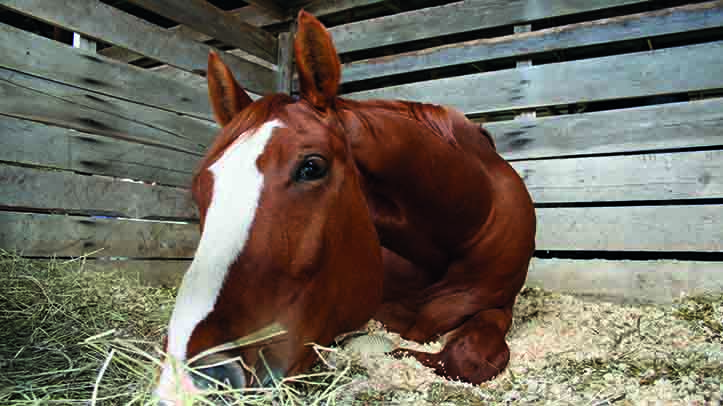The makers of SPILLERS have been associated with the publication of 28 laminitis-related papers, chapters and abstracts since the beginning of 2023, demonstrating its active involvement at the cutting edge of laminitis research, to help reduce the occurrence of this common, debilitating condition.
“So many horse owners live in dread of laminitis and it is one of the most common reasons they contact the SPILLERS Care-Line for advice, especially in the spring,” said Sarah Nelson, product manager at Mars Horsecare.
“We are on a mission to increase understanding of the risk factors for laminitis so that we can help reduce cases. We are extremely proud of the magnitude and quality of our research, and the fact that we can share some of the outcomes as practical advice for horse owners to help them reduce as many of the risk factors as possible, all year round.”
Laminitis can be described simply as damage or disruption to the laminae (the tissues attaching the pedal bone to the hoof wall), causing varying degrees of pain and lameness.
Hyperinsulinemia associated laminitis or ‘HAL’ is now considered the most common form of laminitis and includes cases of laminitis associated with equine metabolic syndrome (EMS) and typically with Pituitary Pars Intermedia Dysfunction (PPID).
The research, in the form of published papers, chapters and abstracts, was conducted in association with the SPILLERS brand, via the WALTHAM Equine Studies Group and their international collaborators. Much of it has been presented at key equine veterinary internal medicine and laminitis meetings as well as symposia in the UK, Europe and the US during the past 16 months.
Five papers, for example, were published in the special endocrinology issue of the Equine Veterinary Journal (EVJ), accounting for more than 25% of all the papers included.
The scope of the work includes research in a variety of areas, from aspects of endocrinology to practical information around water soluble carbohydrate content, strip grazing, nutrient analysis and faecal microbial metabolite profiles.
Ms Nelson added: “The more we understand about the predictors of laminitis risk, the better we will be able to reduce incidences of it.
“Our important collaborative research, most recently in relation to endocrinological disorders, is giving us hope for better future management and consequent significant reduction in cases of laminitis.
“Meanwhile our practical studies such as those on strip grazing and nutrient analysis are providing horse owners with hands-on advice for day-to-day management to help reduce risks.”
“Rest assured, we will continue with our work until we can find ways to help keep every horse and pony as safe as possible from this dreaded condition.”


